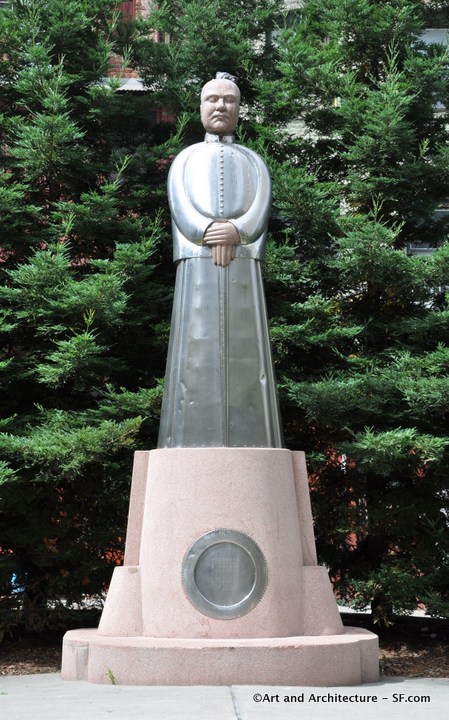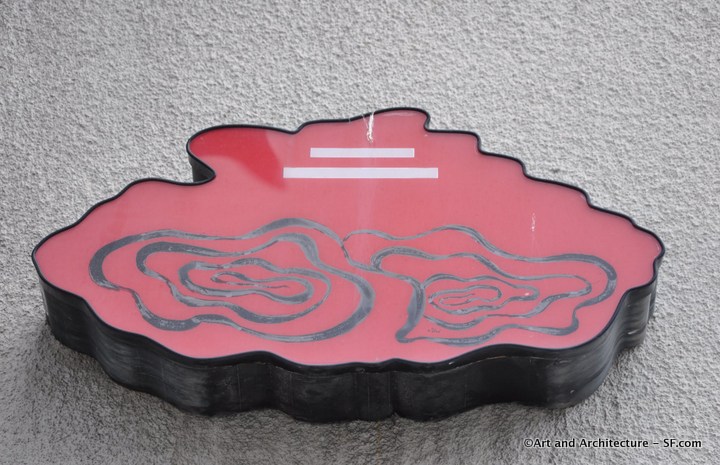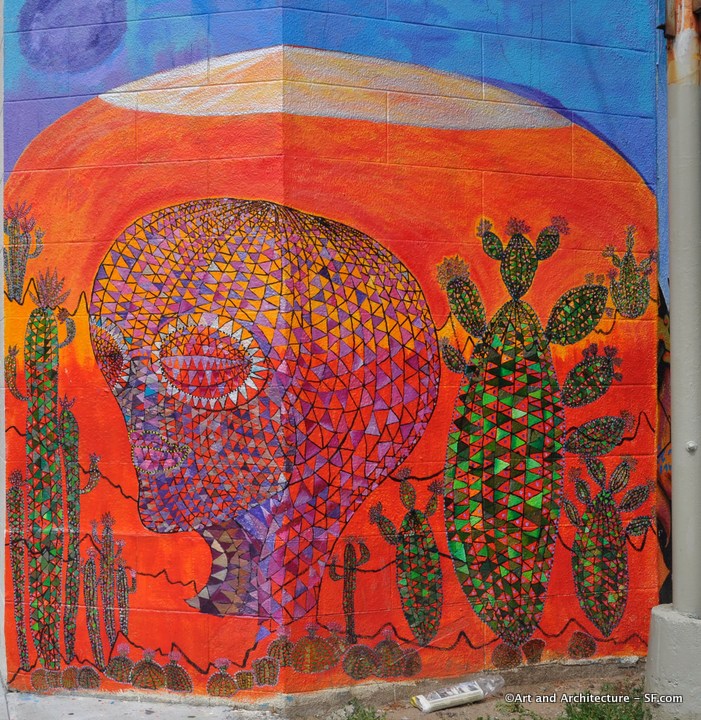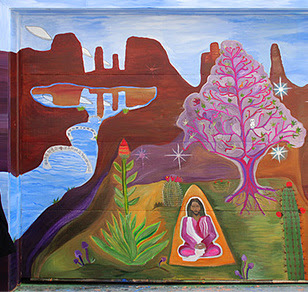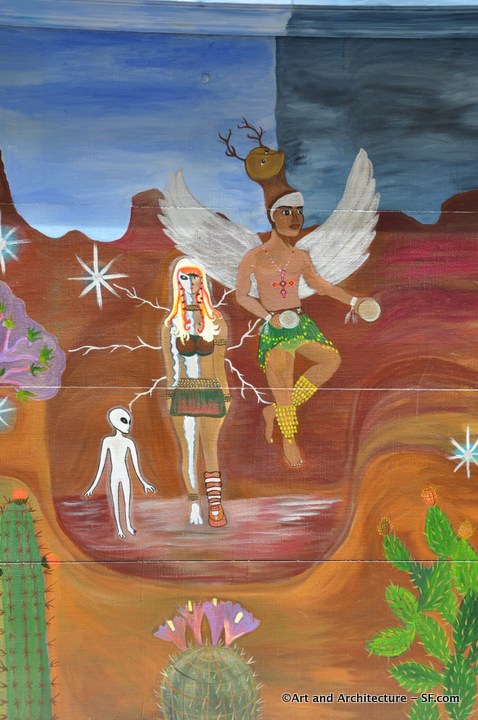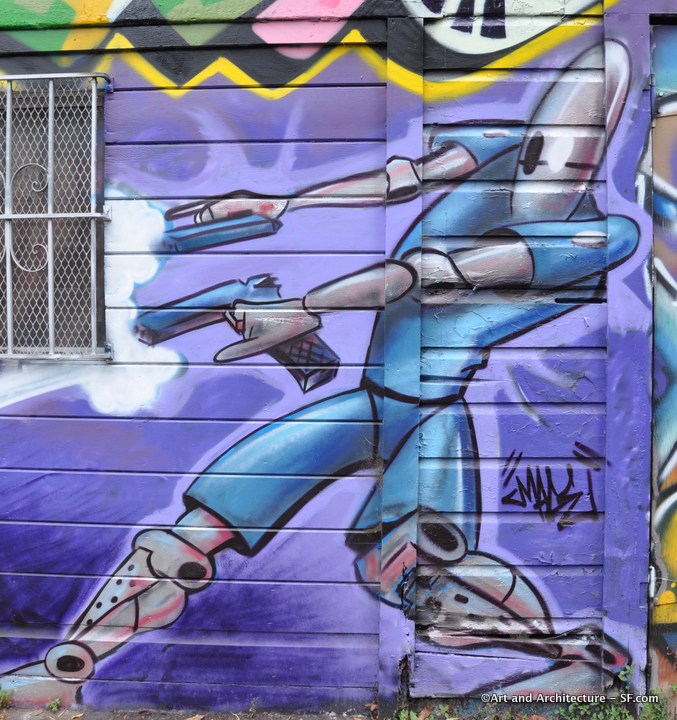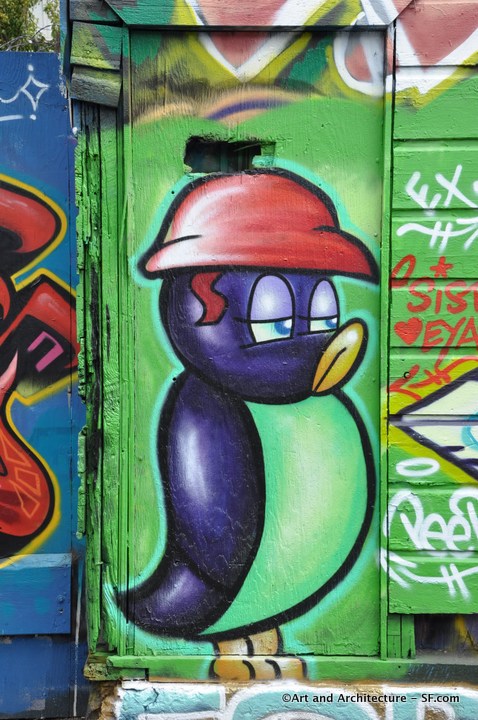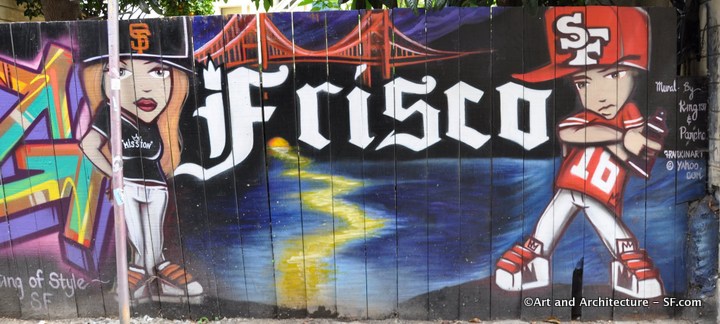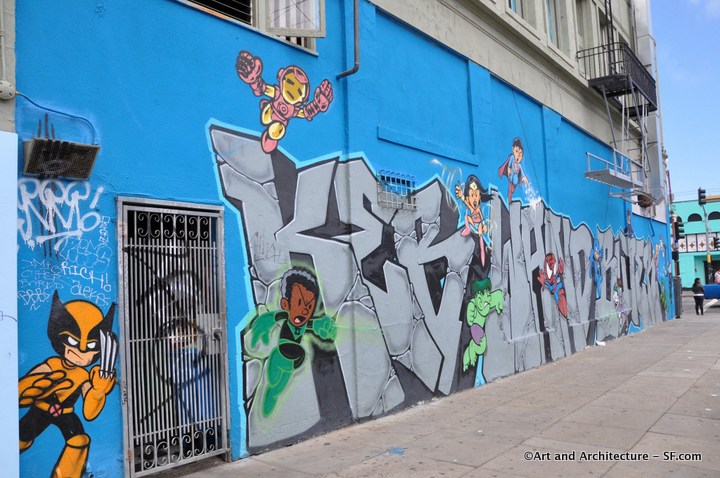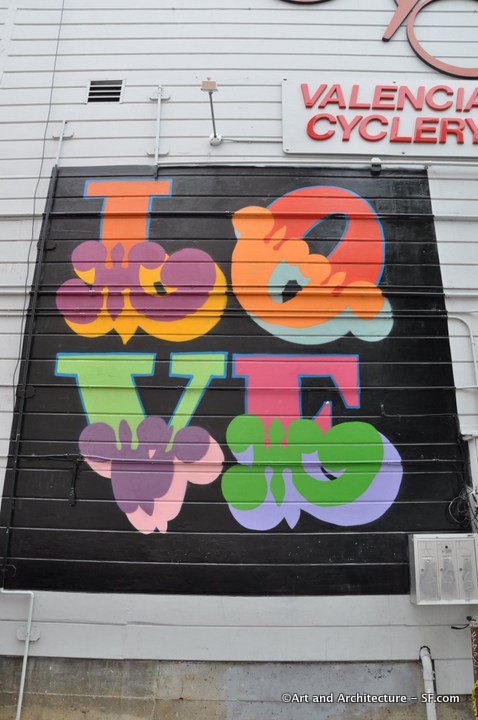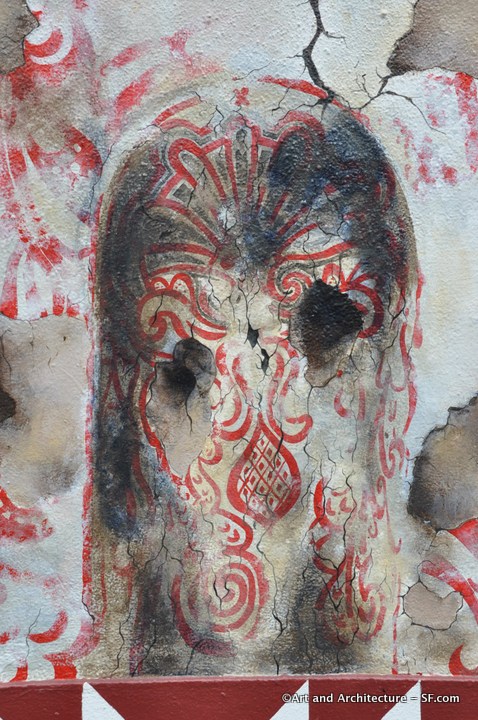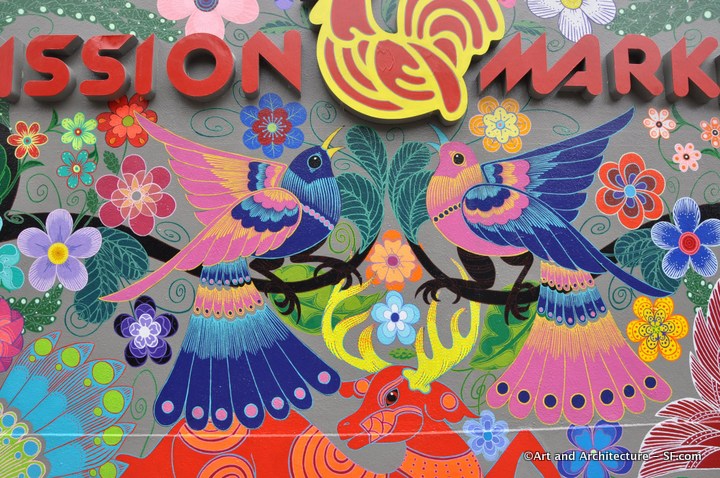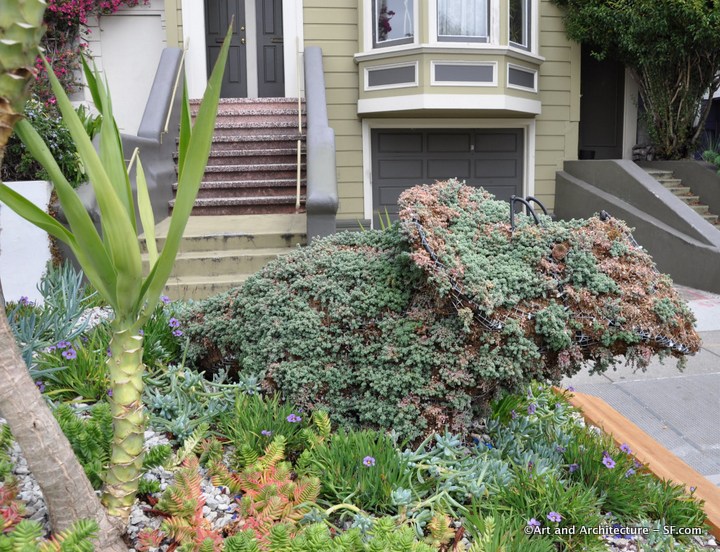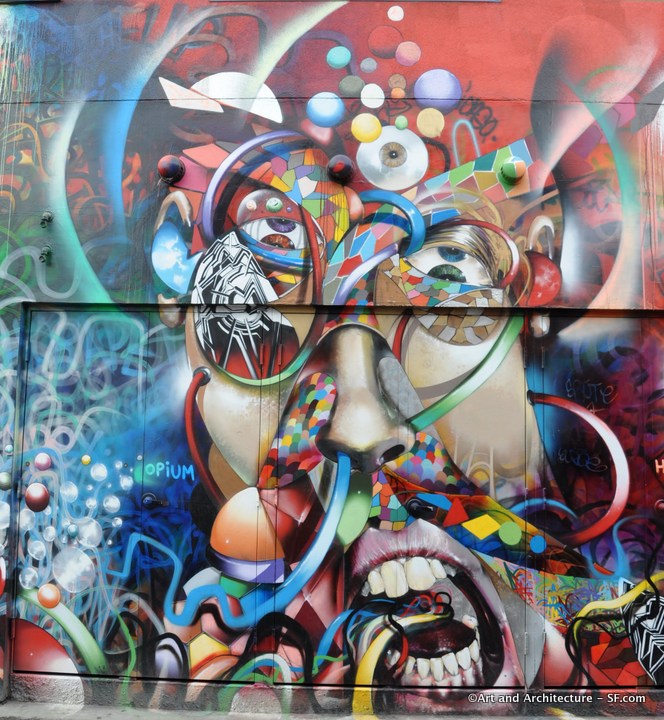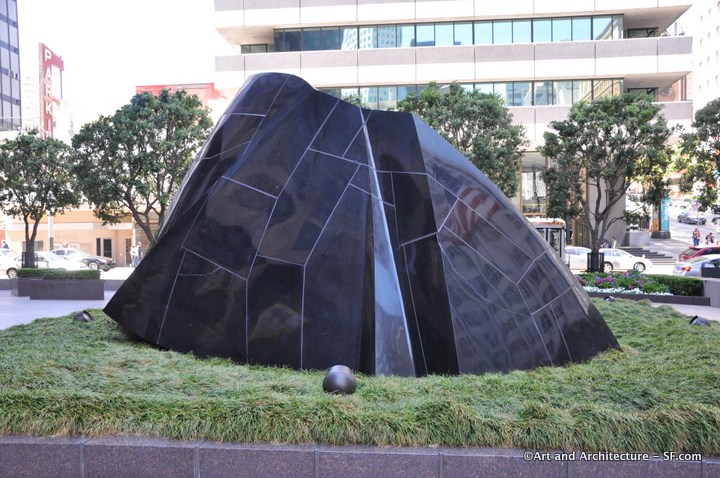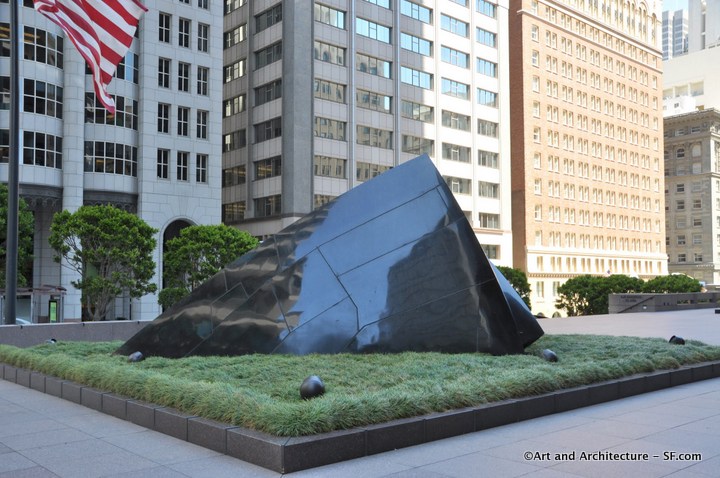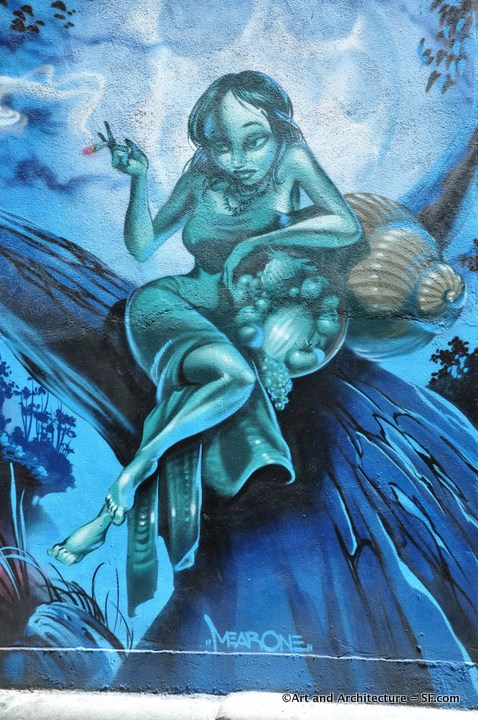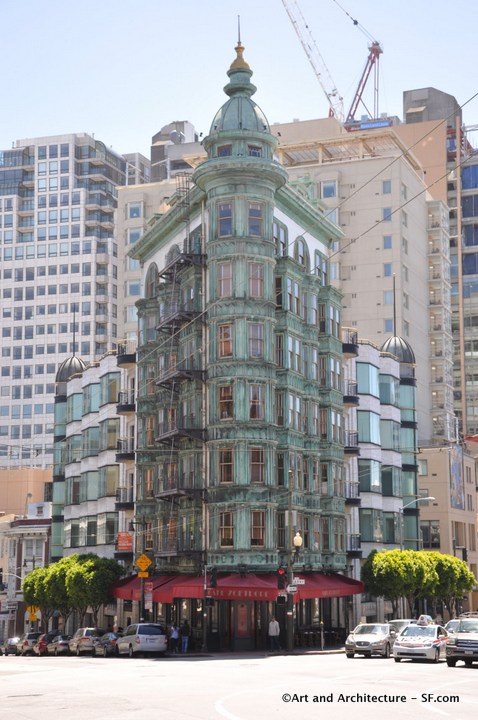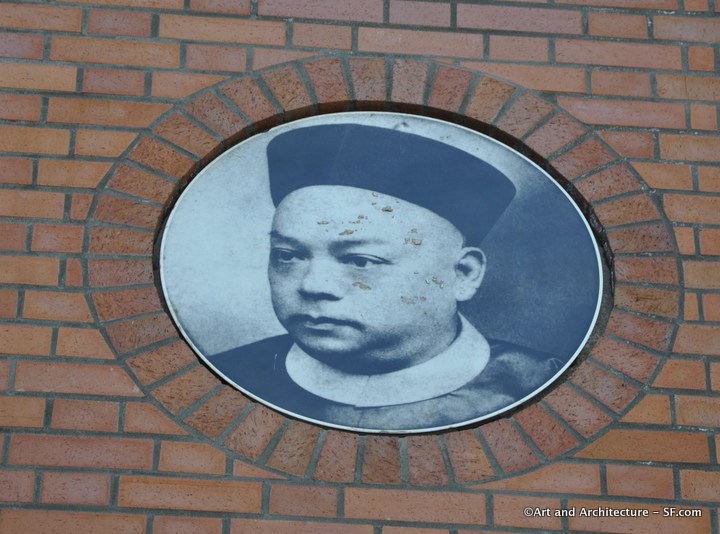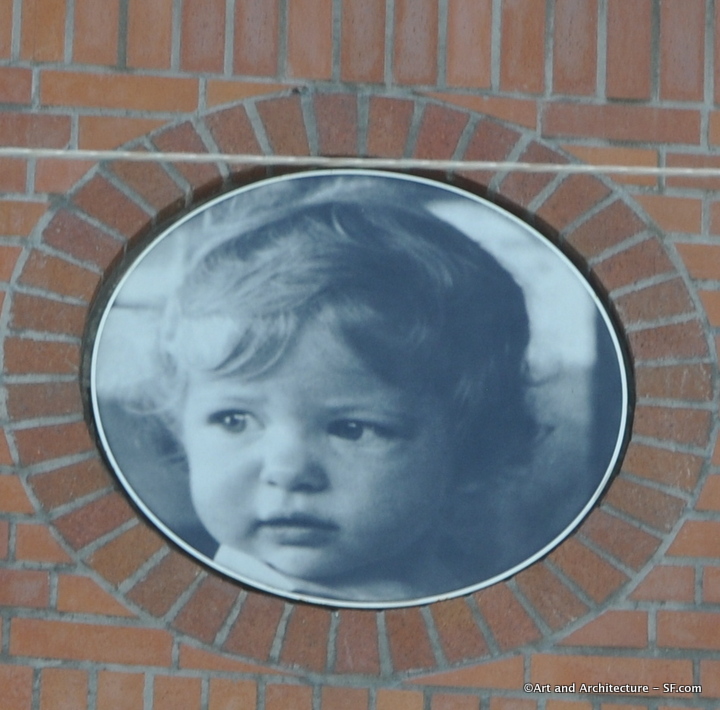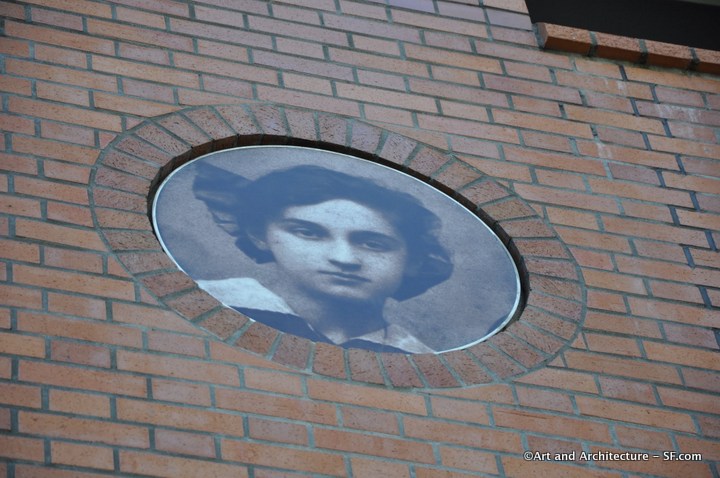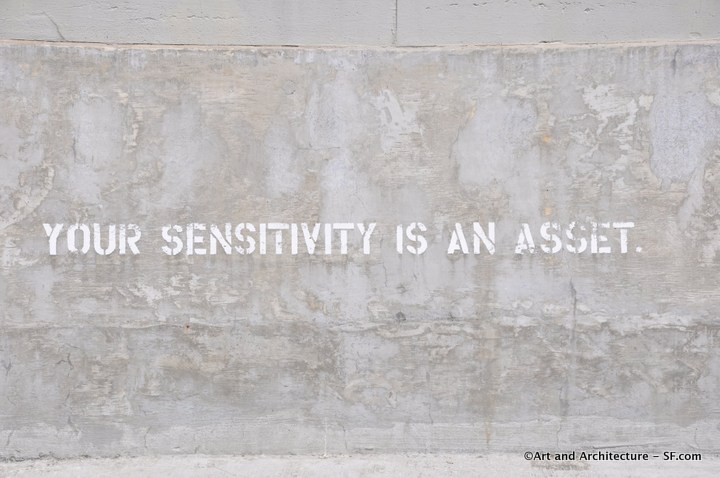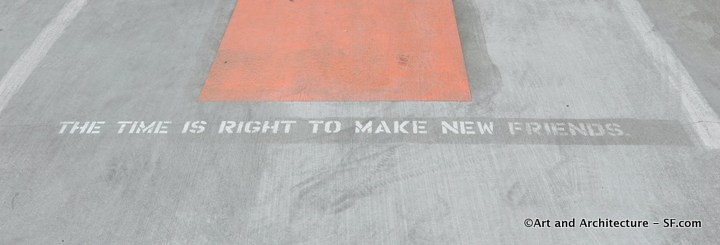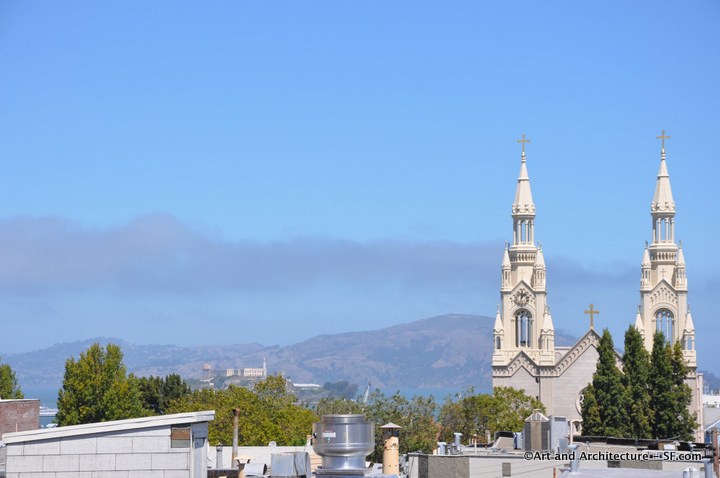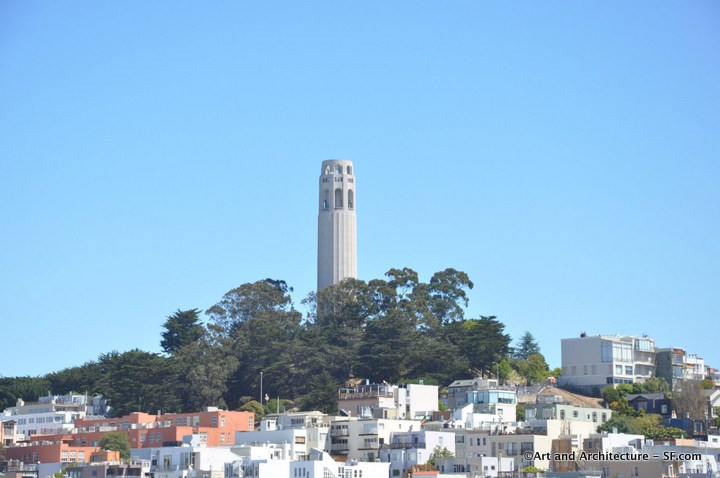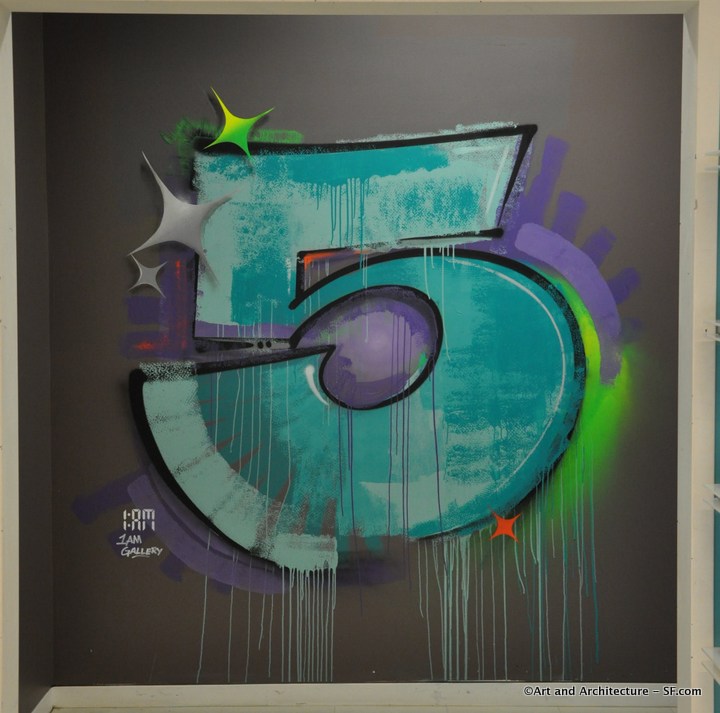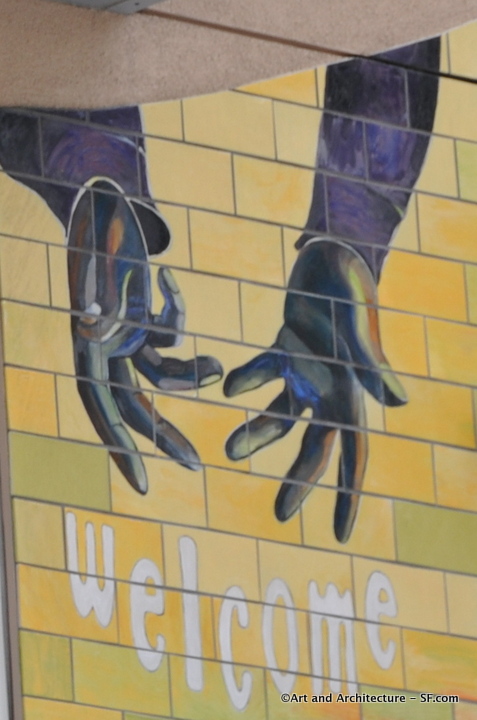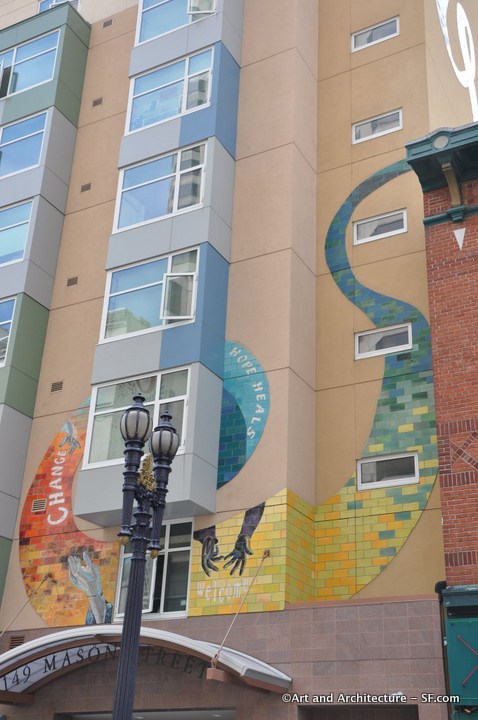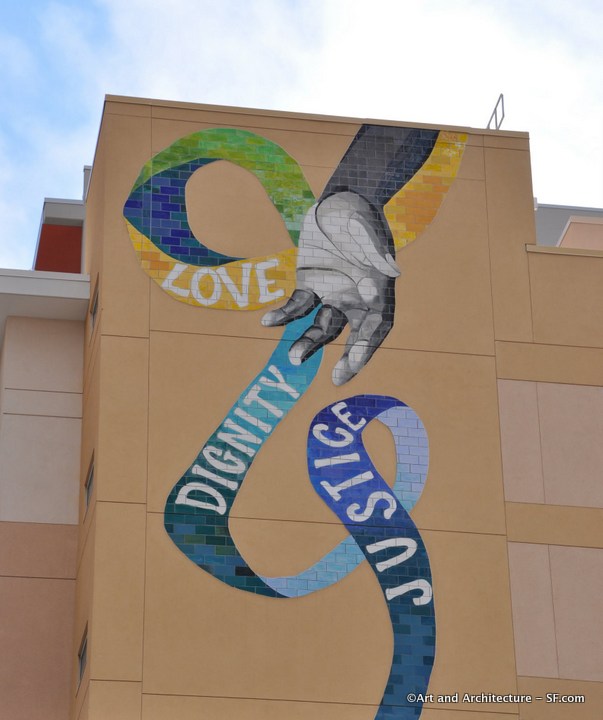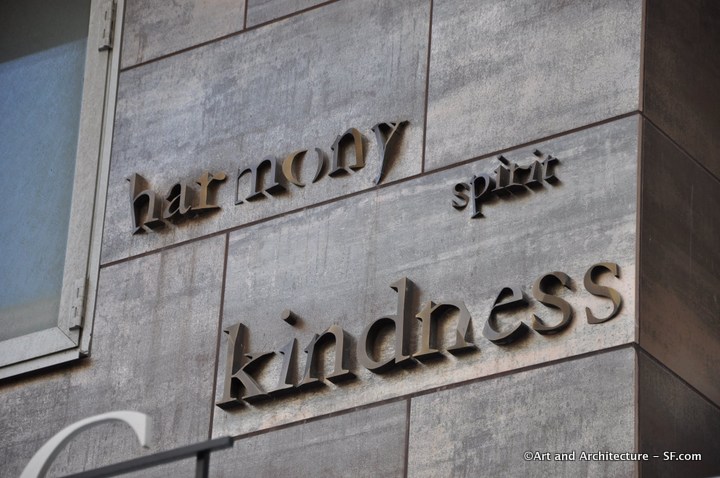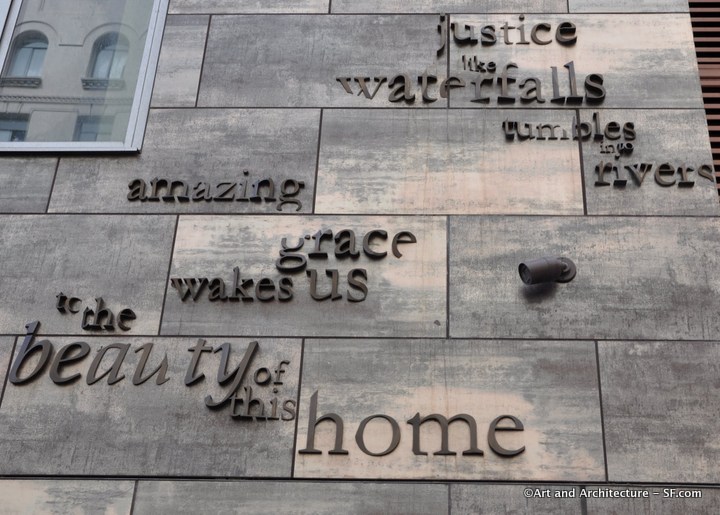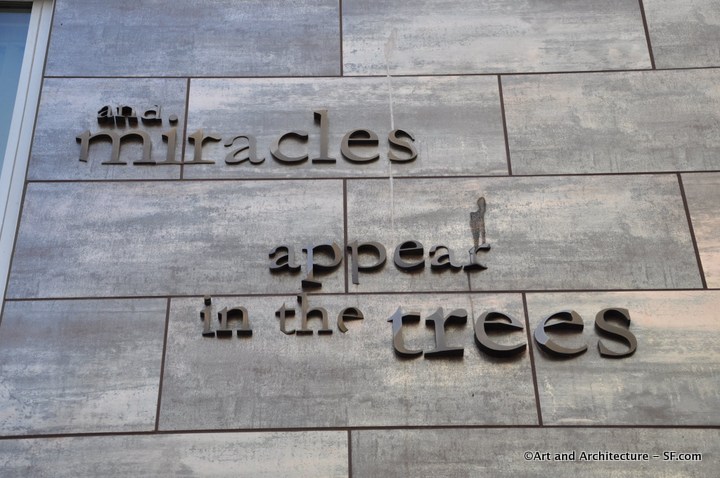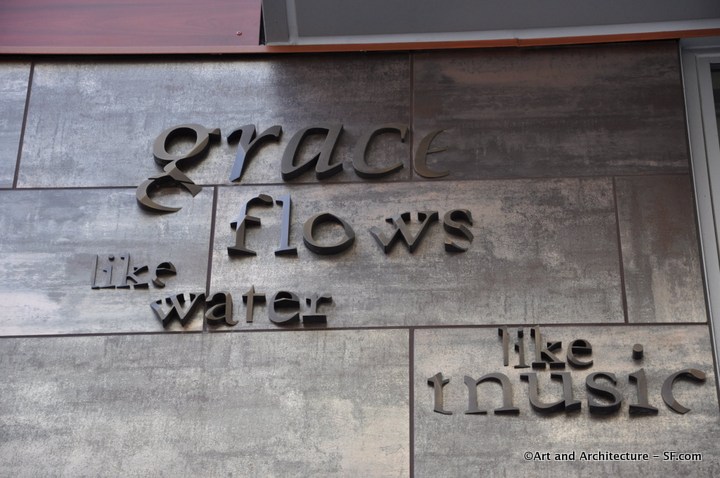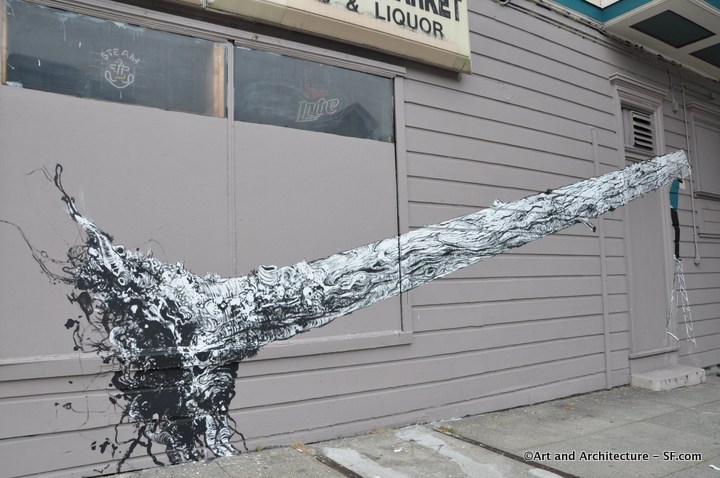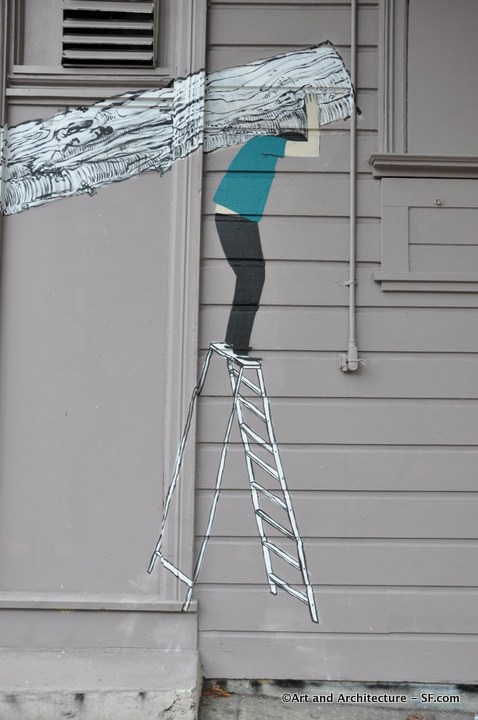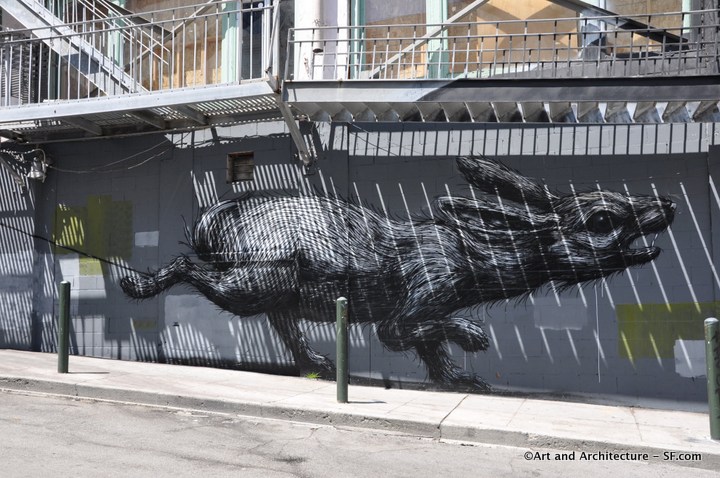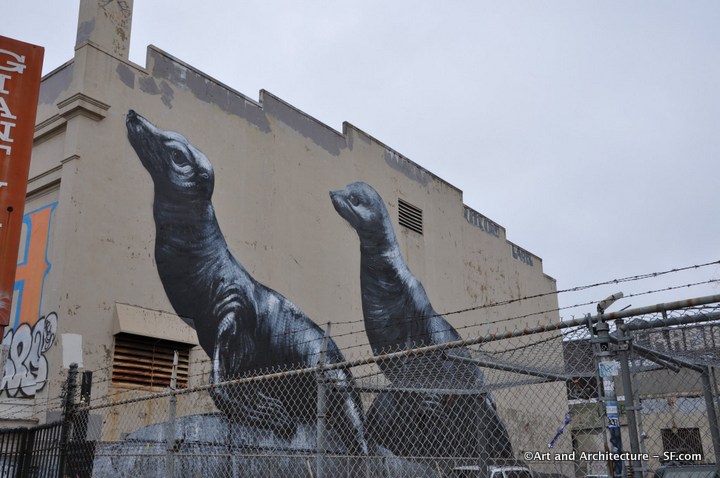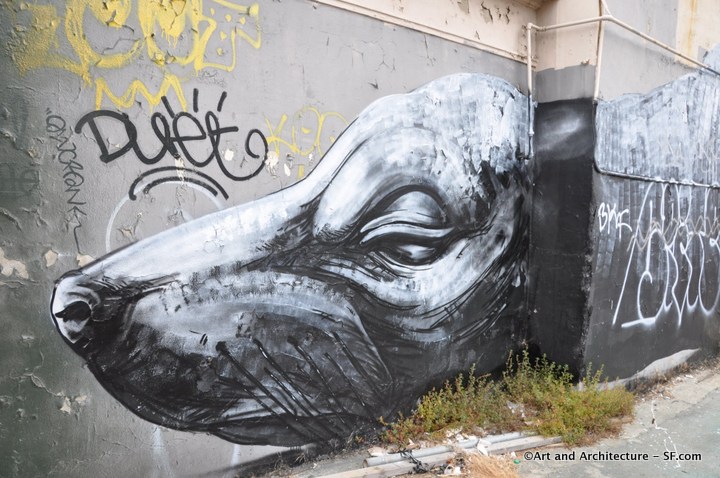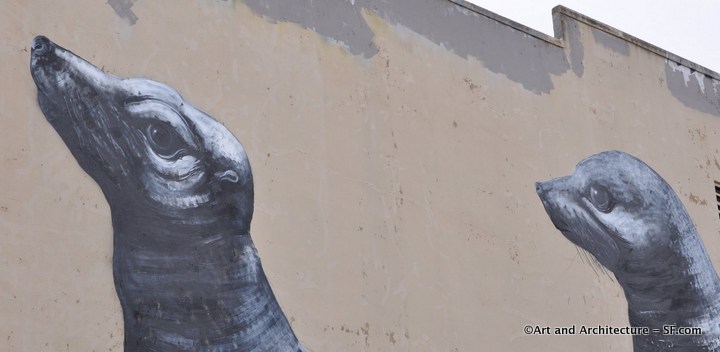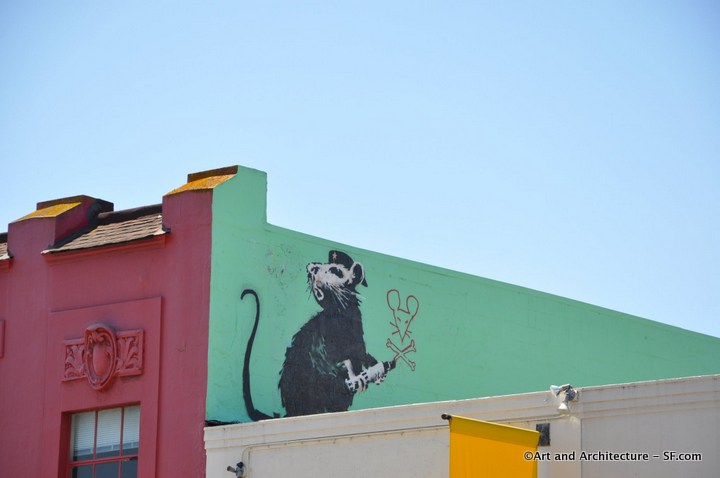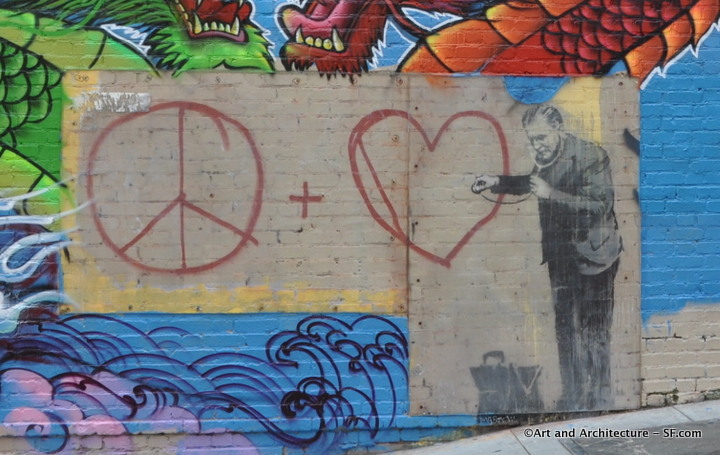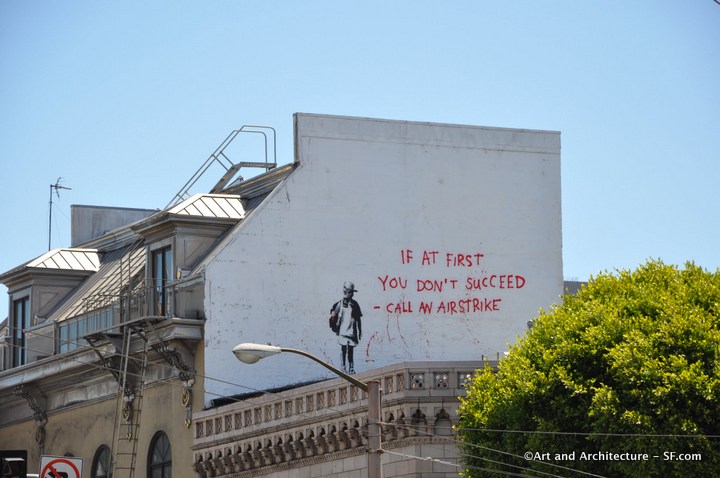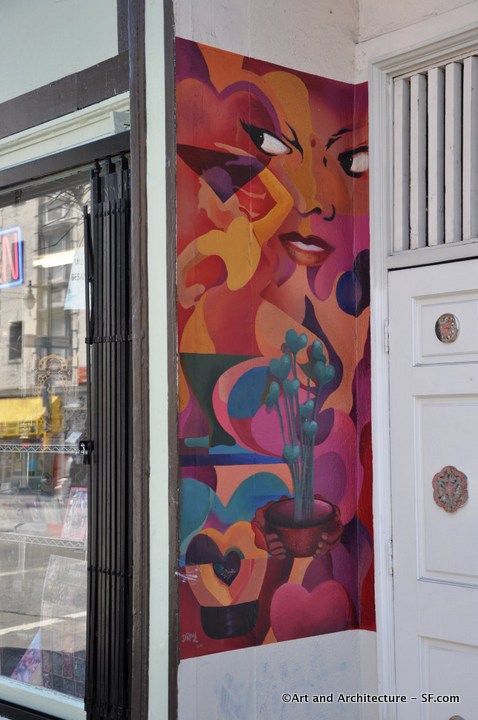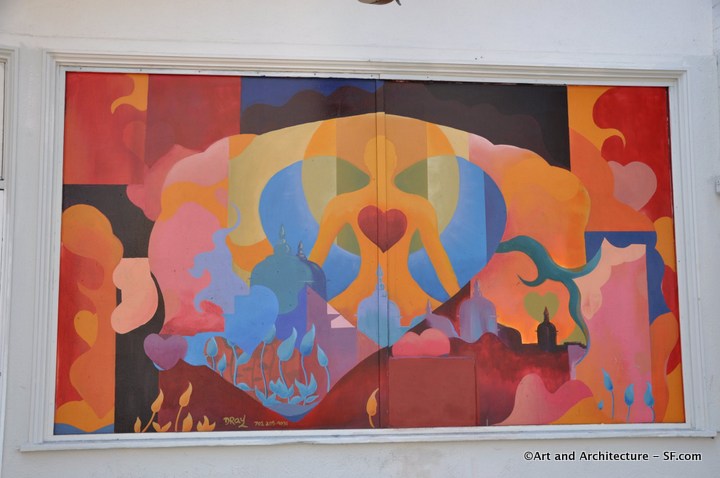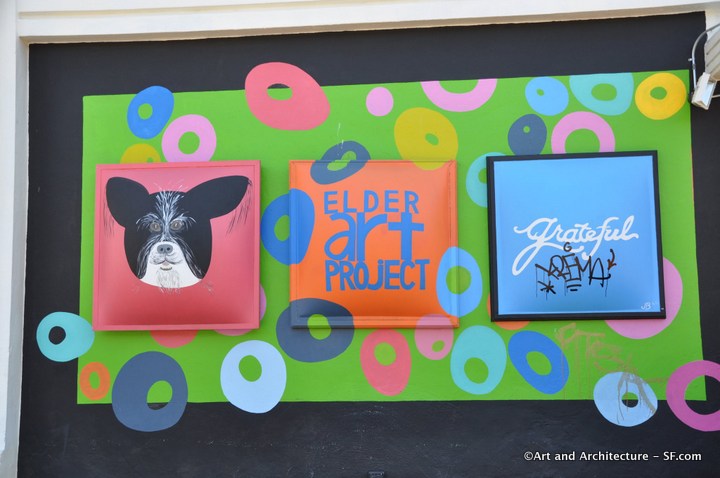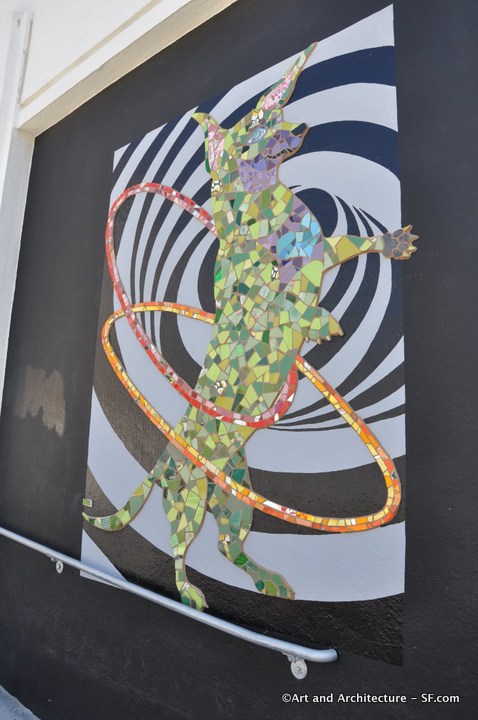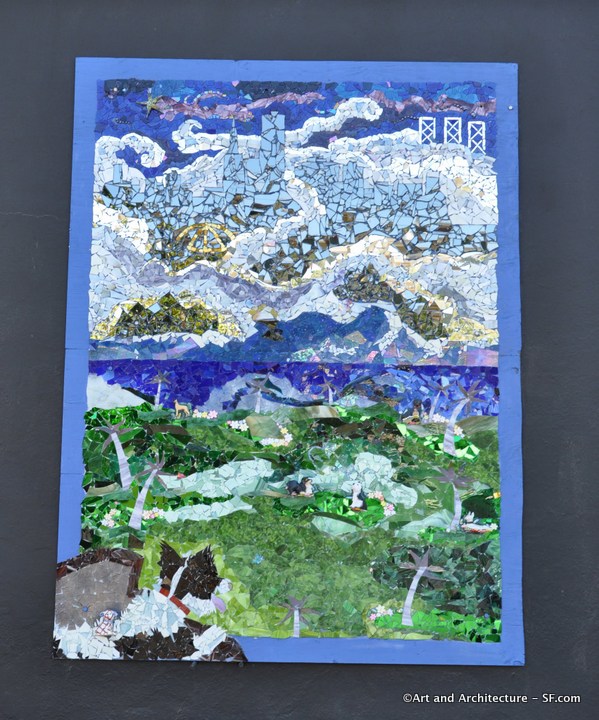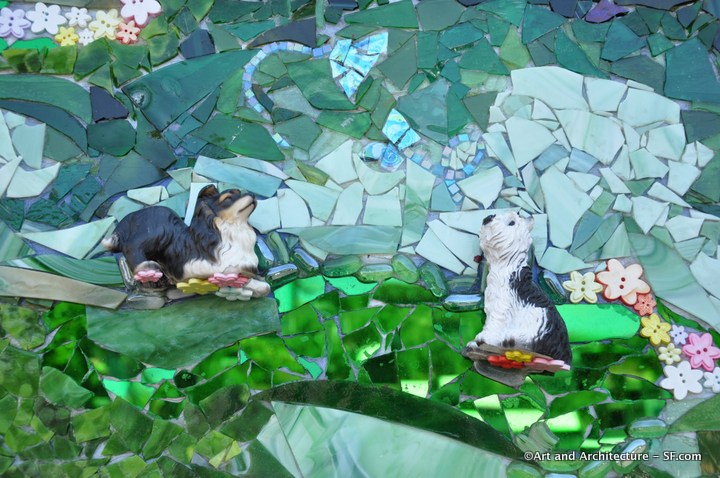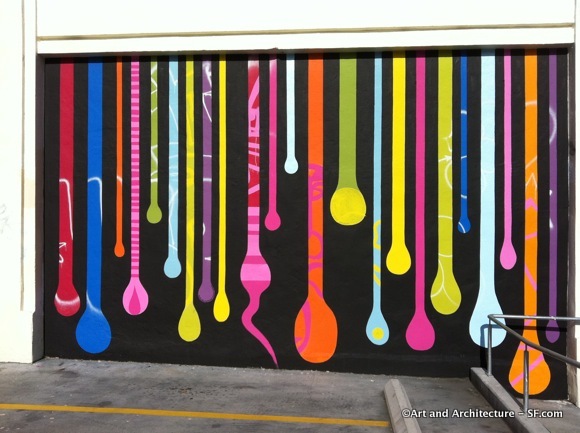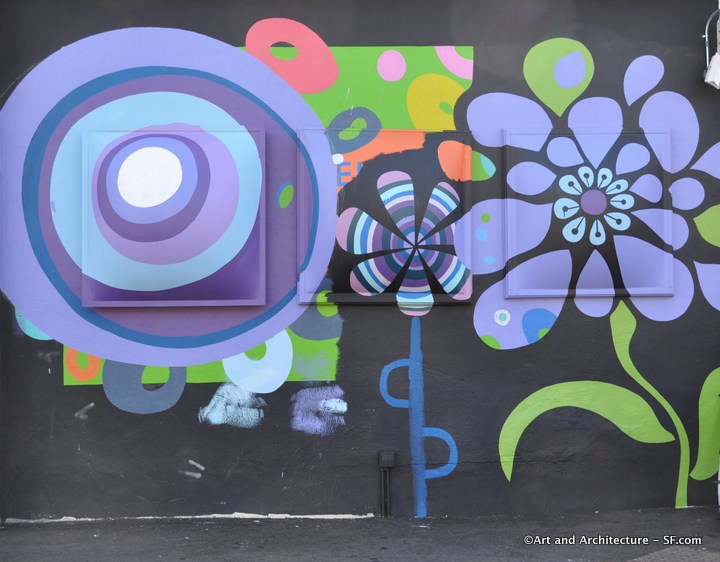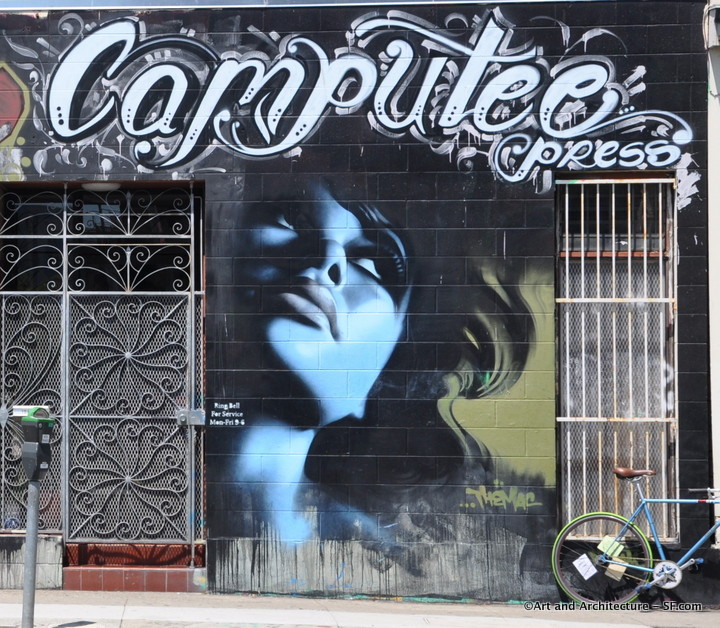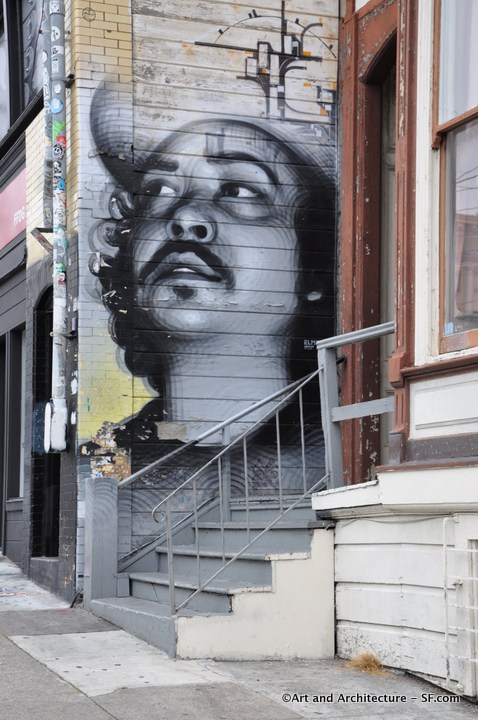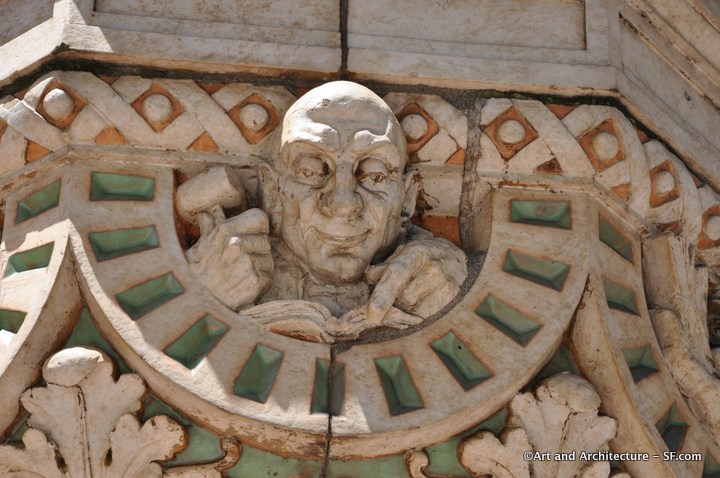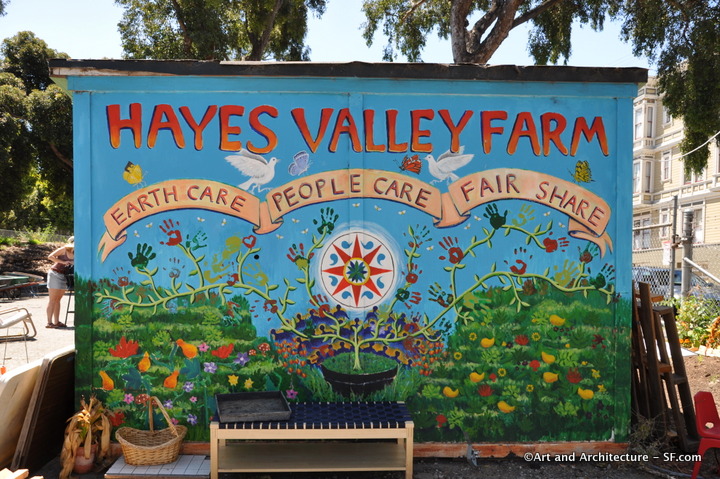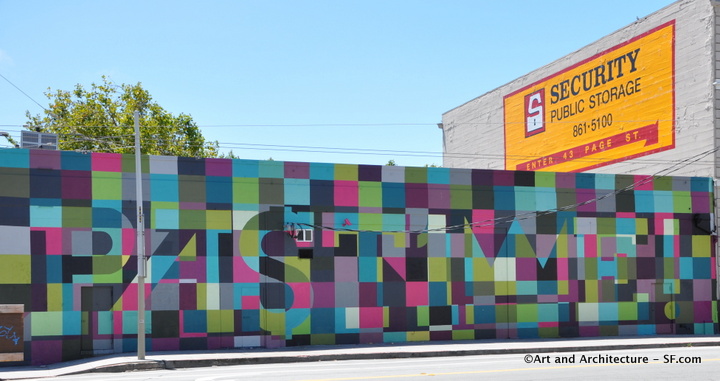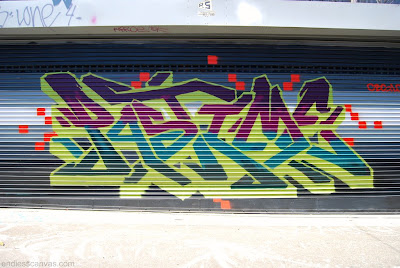Tenderloin, San Francisco
Polk and Hemlock
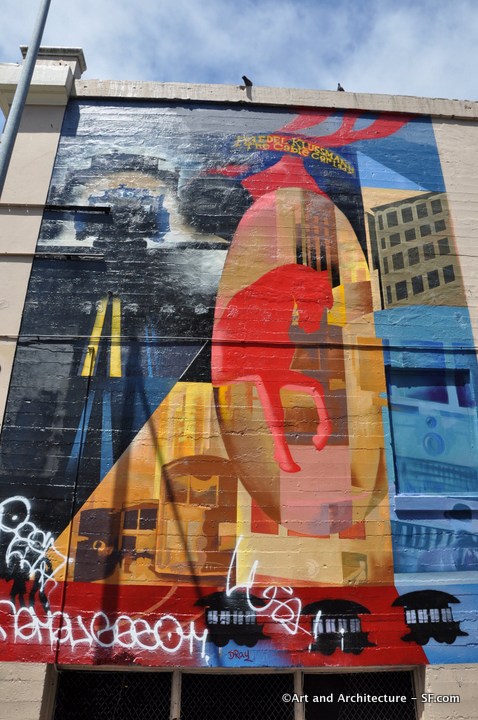
This mural, commissioned by the Mayor’s Office of Economic Workforce and Development as part of the Polk Street Alley’s Program, was painted by Dray. It is “Friedel Klussman, the Cable Car Lady”. I happened upon Dray while he was cleaning the tags off the mural and we got into a great history chat about the cable cars and its depiction in his mural. Front and center you see a horse. That is because originally horses drew the cars, often with heavy loads. On a typically damp summer day in 1869 one of these cars slipped back, flipped over and killed five horses. While a frightening sight to anyone, it was witnessed by Andrew Smith Hallidie who at the time had the resources and know how to do something about it.
Hallidie had been born in England and moved to the U.S. in 1852. His father filed the first patent in Great Britain for the manufacture of wire- rope. As a young man, Hallidie found uses for this technology in California’s Gold Country. He used the wire-rope when designing and building a suspension bridge across Sacramento’s American River. He also found another use for the wire-rope when pulling heavy ore cars out of the underground mines on tracks. The technology was in place for pulling cable cars. The first successful cable car run was August 2nd, 1873.

Then in 1947, Mayor of San Francisco Roger Lapham proposed the closure of the two Powell Street cable car lines, which were owned by the city as part of the San Francisco Municipal Railway. Onto the scene steps Friedel Klussmann, a prominent San Franciscan that had started the San Francisco Beautiful Committee. She gathered a group of 27 women’s organizations and formed the Citizens’ Committee to Save the Cable Cars. In a famous battle of wills, the citizen’s committee eventually forced a referendum on an amendment to the city charter, compelling the city to continue operating the Powell Street lines.
In 1951, the three cable car lines owned by the private California Street Cable Railroad (Cal Cable) were shut down when the company was unable to afford insurance. The city purchased and re-opened the lines in 1952, but the amendment to the city charter did not protect these lines, and the city proceeded with plans to replace them with buses. Again Mrs Klussmann came to the rescue, but with less success this time. The result was a compromise protected system made up of the California Street line from Cal Cable, the Powell-Mason line already in municipal ownership, and a third hybrid line made up by grafting the Hyde Street section of Cal Cable’s O’Farrell, Jones & Hyde line onto a truncated Powell-Washington-Jackson line (now known as the Powell-Hyde line).
When Mrs Klussmann died at the age of 90 in 1986, the cable cars were decorated in black in her memory. In 1997, the city dedicated the turntable at the outer terminal of the Powell-Hyde line to Mrs Klussmann
I am often asked if tagging another persons mural is unseemly, well yes it is, and it does force someone to come clean up the mess. As sad as that is it led to my having the absolute pleasure of meeting Dray as he worked.
Some other works of Drays’ in the block are a little decoration for Maharani, an Indian Restaurant on Polk.
You can find Dray on Facebook under Visual Compositions by Dray.
 These two murals are by Daniel Doherty. Clarion alley is a famous mural alley that has been around for quite a long time in the Mission District. Once an artist is given space, and as long as it is maintained it, pretty much belongs to the artist.. There is a committee that notifies the artist if the mural has been tagged or defaced.
These two murals are by Daniel Doherty. Clarion alley is a famous mural alley that has been around for quite a long time in the Mission District. Once an artist is given space, and as long as it is maintained it, pretty much belongs to the artist.. There is a committee that notifies the artist if the mural has been tagged or defaced.
